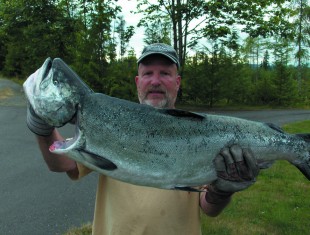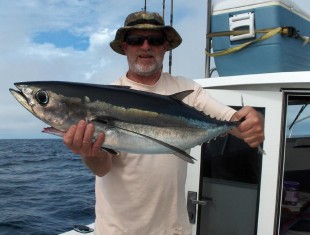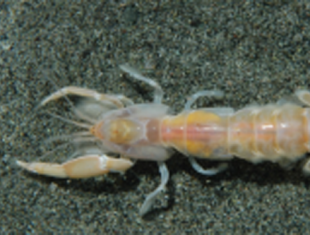EARL SANDE
Humans worldwide have been taking advantage of marine life for thousands of years. You would think with all that practice we would learn from our over-harvesting mistakes. In some instances we actually have, but those are few and far between.
By the 1400s in Europe the once abundant Atlantic salmon runs were in steep decline from over-fishing and human caused watershed habitat destruction. And recent excavations in England have shown that in land dump sites for codfish the head bones were missing after the early 1300s, proving that codfish had been exterminated near shore and most of these fish were then imported from other countries with the heads removed
One of the biggest embarrassments for American fisheries management has been the Atlantic cod fishery off our northeast coast. These codfish had been successfully fished for five hundred years by low tech handliners until the 1980s when the Federal Government allowed huge ships with monster nets to trawl the seas until the cod were nearly commercially extinct. Now the population is so low they may never recover.
Recent headlines are covering the dramatic decline of halibut in the Bering Sea caused by over-fishing. The U.S.-Canada International Pacific Halibut Commission is considering shutting down the commercial hook-and-line Bering Sea halibut fishery, which would devastate native and non-native Alaskan fishermen in that area.
A newspaper article written by Lee Van Der Voo stated, “By law, only halibut caught by hook and line can be sold to consumers. Trawl boats are allowed to kill a certain amount of halibut in their nets as accidental catch, but all except a small amount funneled to food banks must be thrown overboard.”
If common sense was allowed to prevail then all vessels fishing for bottom fish in Alaska would be cut back and all the halibut by-catch would be somehow transferred to local hook and line halibut boats to be sold where ever they want. But that’s not going to happen because the big money factory ships pretty much run the show in the high seas.
Our northwest history of over-fishing started as soon as white man arrived in earnest during the 1880s. By then there were 40 canneries on the lower Columbia River canning most of the 44 million pounds of spring Chinook caught each year.
By 1892 there were 378 fish traps and 57 fish wheels operating on the Columbia River. A skilled Chinese laborer could clean 1,700 salmon in an 11-hour day and make 40 dollars a month, which was good money in those days. By 1900 Portland newspapers were describing what the Columbia River would be like with no salmon because of the commercial over-harvest.
In 1880 near Ellensburg, the Yakima River seemed full of salmon, but just 10 years later hardly any could be found. During that time period massive runs of giant Chinook were streaming into Canada up the Columbia River and 10 years later there were barely any.
Wiping out wild salmon in Puget Sound was just as easy for us when huge salmon traps were built all over the Sound. Some were nearly 800 yards long. They were made out of piling and chicken wire. As the salmon neared the river they would swim along the fence line ending up in a holding pen and brailed out on to barges when needed.
During the 1913 salmon run nearly 40 million salmon were killed in Puget Sound. Salmon traps were outlawed in 1934 by a vote of the people of the State of Washington, so the trappers moved to Alaska to continue their destructive ways until Alaskan statehood and were then outlawed.
Before we showed up, our local Indian Tribes didn’t have the technology to wipe out marine life and they probably learned over time that if they blocked off a river and caught all the salmon they wouldn’t have much to eat years later.
That all changed when we taught them about money and buying food at the store. When salmon are worth dollars and you need dollars to survive in today’s world you catch as many as you can. With the 1974 Boldt decision all the rivers were full of nets and that was the end of what was left of wild salmon as we knew it. Chum and pink salmon were the exception in some rivers.
More recently, the over-fishing of crab east of Olympia has reared its ugly head. Five years ago I crabbed near the Nisqually River. We dropped four pots down for two hours and pulled up 50 keepers. We kept three limits of the biggest ones
. The Tribes moved in big time three years ago fishing hundreds of pots for most of the year. Now it’s hard to get one crab in your pot. No one seems to be watching the store. But it’s not much different then our commercial crab fishermen in the ocean off Westport. They fish thousands of pots from December until October. Many times they catch one crab per pot if they are lucky.
On the bright side, the Columbia River salmon runs have been very good the last 10 years, mainly for hatchery fish but some wild stocks are also doing okay.
Letting more water over the dams during the spring smolt migration and good ocean conditions are a couple of the reasons why this is happening. So it’s not all doom and gloom, but close to it, after all we are all human and far from perfect and never will be world-wide..




